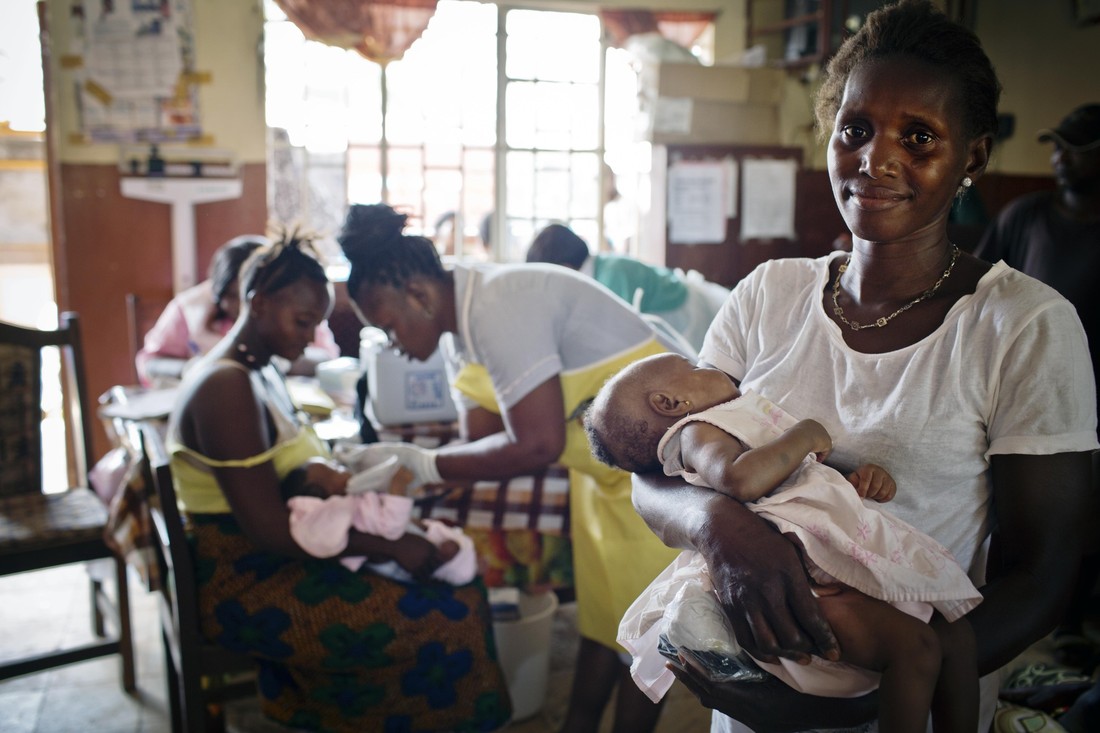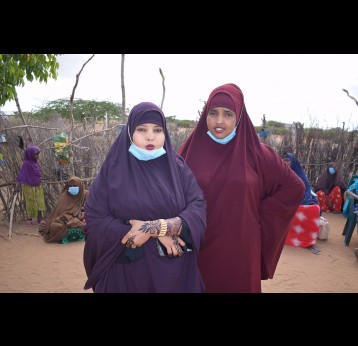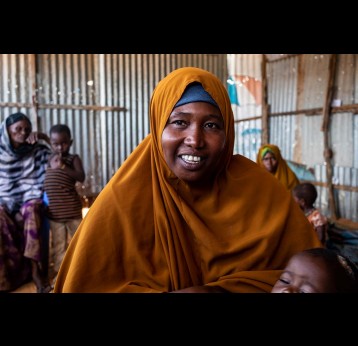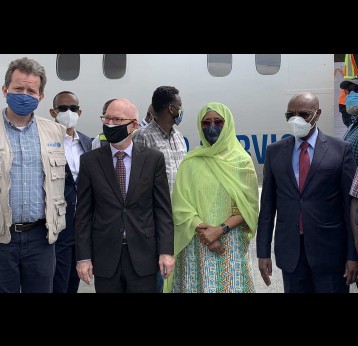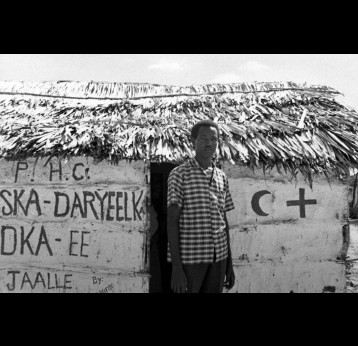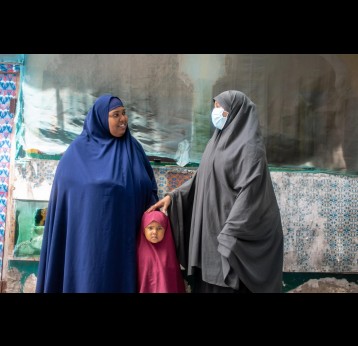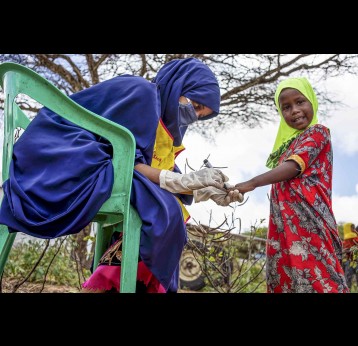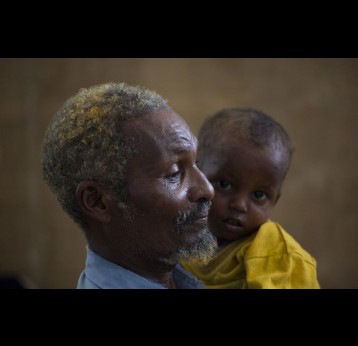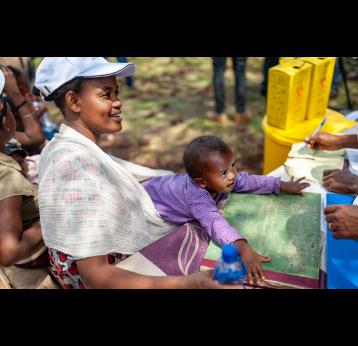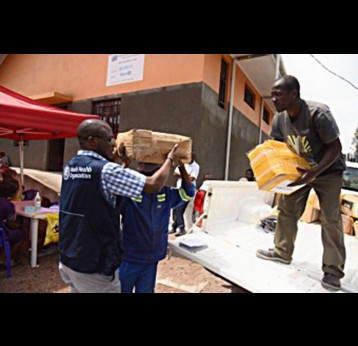Country Information
Commitments: Multi-year programme budgets endorsed in principle by the Gavi Board. These become financial commitments upon approval each year for the following calendar year.
Approvals: Total Approved for funding
Disclaimer: the boundaries and names shown and the designations used on this map do not imply the expression of any opinion whatsoever on the part of Gavi, the Vaccine Alliance concerning the legal status of any country, territory, city or area or of its authorities, or concerning the delimitation of its frontiers or boundaries. Dotted lines on maps represent approximate border lines for which there may not yet be full agreement.
This Gavi country data is made available under the Creative Commons BY 4.0 license: https://creativecommons.org/licenses/by/4.0/
Latest News
All News30 July 2021
Kenya’s digital vaccine warriors
The Savannah Innovation Hub teaches young women in Garissa County to counteract COVID-19 vaccine misinformation from groups like Al-Shabaab.
1 April 2021
Somalia rolls out vaccines for COVID-19
On 15 March 2020, Somalia received 300 000 doses of Oxford AstraZeneca vaccines from the COVAX Facility to protect frontline workers and elderly people with chronic health conditions from COVID-19. The World Health Organization (WHO) hears…
10 February 2021
The world's last smallpox patient
Smallpox was one of the deadliest diseases in the world, but it’s the only one in history to have been eradicated globally. One Somali man sat on the frontline of this effort and can inspire the world today as we battle yet another devastating…
14 December 2020
Rallying to vaccinate every child against polio
Community mobilizers inform and prepare communities for vaccinators.
4 September 2020
How Somalia is resuming vaccination campaigns despite COVID-19
More than 3,000 health workers are conducting a three-day health campaign from 30 August to 1 September 2020 to ensure that around 400,000 children aged under five receive measles and polio vaccines, as well as vitamin A and deworming tablets, at…
13 August 2020
Somalia responds swiftly to measles outbreak in Jubaland State
A surveillance system in Somalia is providing real-time early warning disease alerts to help tackle health threats such as measles outbreaks and COVID-19 cases.
Subscribe to our newsletter
Sources
| Name | Source | Date |
|---|---|---|
| Total population by country, by year, by age | United Nations, United Nations, Department of Economic and Social Affairs, Population Division. World Population Prospects. | 2019-07-31 |
| Total number of children surviving until 1 year old by country and by year | United Nations, United Nations, Department of Economic and Social Affairs, Population Division. World Population Prospects. | 2019-07-31 |
| UN Life births per gender | United Nations, United Nations, Department of Economic and Social Affairs, Population Division. World Population Prospects. | 2019-07-31 |
| Under-five mortality rate by country and by year | UNICEF CME Info http://www.childmortality.org/, Level & Trends in Child Mortality. Estimates Developed by the UN Inter-agency Group for Child Mortality Estimation (UNICEF, WHO, World Bank, UN DESA, UNPD). | 2020-09-01 |
| Infant mortality rate by country and by year | United Nations, United Nations, Department of Economic and Social Affairs, Population Division. World Population Prospects. | 2020-09-01 |
| GNI per capita, Atlas method (current US$) | World Bank, The gross national income, converted to U.S. dollars using the World Bank Atlas method, divided by the midyear population | 2021-07-01 |
| Antigen Coverage (%) by country and by year | WHO/UNICEF, Coverage refers to the number of administered doses divided by the number of eligible children to receive that vaccine. | 2021-07-15 |
| Percentage of districts with >=80% DTP3 coverage | WHO, Joint Reporting Form (JRF) | 2021-07-15 |
| Percentage of districts with <50% DTP3 coverage | WHO, Joint Reporting Form (JRF) | 2021-07-15 |
| Total Disbursed - Finance Disbursement | GAVI, Access software for Finance (in USD) | 2019-09-17 |
Grade of Confidence (GoC): The WHO and UNICEF estimates of national immunisation coverage (wuenic) are based on data and information that are of varying, and, in some instances, unknown quality. Beginning with the 2011 revision WHO/UNICEF describe their grade of confidence (GoC) in these estimates. As there is no underlying probability model upon which the estimates are based, WHO/UNICEF are unable to present classical measures of uncertainty, e.g., confidence intervals. Moreover, WHO/UNICEF have chosen not to make subjective estimates of plausibility/certainty ranges around the coverage. The GoC reflects the degree of empirical support upon which the estimates are based. It is not a judgment of the quality of data reported by national authorities.
|
Explanation of GoC values: |
|
| *** |
Estimate is supported by reported data [R+], coverage recalculated with an independent denominator from the World Population Prospects from the UN Population Division (D+), and at least one supporting survey within 2 years [S+]. While well supported, the estimate still carries a risk of being wrong. |
| ** | Estimate is supported by at least one data source; [R+], [S+], or [D+]; and no data source, [R-], [D-], or [S-], challenges the estimate. |
| * | There are no directly supporting data; or data from at least one source; [R-], [D-], [S-]; challenge the estimate. |

